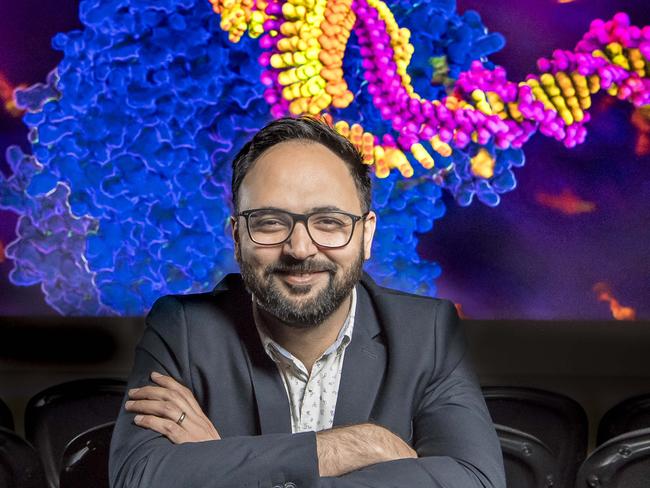Facebook‘s Mark Zuckerberg, Priscilla Chan help fund projects to map 37 trillion human cells
MELBOURNE researchers are joining an ambitious global project to map all the cells in a healthy human body, in the start of a new era in science.
VIC News
Don't miss out on the headlines from VIC News. Followed categories will be added to My News.
THERE are 37 trillion cells in the human body.
They are the building blocks of human life. And yet, we know little about them.
But an ambitious global research project, the Human Cell Atlas, is aiming to map and characterise all the cells in a healthy human body.
FACEBOOK’S MARK ZUCKERBERG TO GIVE AWAY FORTUNE
WALTER AND ELIZA HALL INSTITUTE 4D MICROSCOPE TO REWRITE CURRENT MEDICAL THINKING
Using new single cell sequencing technology, the collaboration is being lauded as the “start of a new era in science” and an “instruction manual for life itself”.
By understanding these building blocks, the hope is this publicly available atlas will better inform research into treatments and cures for common diseases, advance discoveries and targets for personalised medicine, and create a map for predicting disease before symptoms appear.
Experts from 14 Australian biomedical institutes are meeting for the first time at the Walter and Eliza Hall Institute of Medical Research today, to plan their strategy as the first national chapter.
The Chan Zuckerberg Initiative is funding projects that will contribute to the atlas.


WEHI group leader and cellular biologist Dr Shalin Naik, who is part of the atlas’s global organising committee, said new technologies were widely propelling research.
“It’s like getting the latest telescope and seeing the universe in a completely different way,” Dr Naik said.
“Until this single-cell DNA sequencing first emerged in 2009, we’ve been looking at the smoothie of a particular tissue. We haven’t been able to look at the individual cells in that.
“We’ve discovered new cell types almost weekly since this technology came around.”
With the first million mapped cells released to kickstart the project, the first task for Australian researchers will be to analyse a blood sample from a Victorian to calibrate the analysis.
Dr Naik said the more we understood cells, the better chance we had at overcoming disease.
“The Human Genome Project was like a parts list for a car,” he said. “The Human Cell Atlas is trying to get more like an instruction manual.
“If you have a parts list and an instructional manual, you can replace your carburettor. Or you might design a new carburettor at some point.”
The first draft of the atlas is due by 2021.


